Innovations in Metal Frame Building Technology Position Lida Group as a Leader in Steel Structure Construction
2025-Sep-25 10:53:16
By Admin
1. Introduction: The Rise of Metal Frame Construction in the Global Building Industry
The global construction industry is undergoing a profound transformation, driven by the need for faster, more sustainable, and cost-effective building solutions. As traditional construction methods—reliant on concrete and wood—struggle to meet modern demands for efficiency, durability, and environmental responsibility, metal frame construction has emerged as a viable alternative. Steel, in particular, has become a material of choice for architects, engineers, and developers, thanks to its high strength-to-weight ratio, recyclability, and adaptability to diverse building types.
According to the World Steel Association, the use of steel in construction has grown by 7% annually over the past decade, with projections indicating continued growth as urbanization accelerates in emerging economies and sustainability goals become more stringent. This growth is not just a trend but a response to critical industry challenges: concrete production accounts for 8% of global carbon emissions, while wood construction faces limitations in large-scale or high-rise projects due to fire risk and structural constraints. Metal frame construction, by contrast, offers a path to lower emissions, faster assembly, and longer-lasting buildings.
At the forefront of this metal frame revolution is Lida Group, a global leader in prefabricated and steel structure construction. For over two decades, Lida has dedicated itself to advancing metal frame building technology, developing innovations that address key pain points in steel construction—from complex assembly processes to limited design flexibility. By combining precision engineering, automated manufacturing, and user-centric design, Lida has redefined what is possible with metal frame buildings, positioning itself as a leader in the steel structure construction sector.
This article explores the innovations that have set Lida Group apart, from advanced modular metal framing systems to smart integration and sustainable manufacturing practices. It examines how these technologies have been applied across diverse projects—from industrial warehouses and commercial complexes to residential buildings and emergency shelters—and analyzes the impact of Lida’s leadership on the broader construction industry. Finally, it looks ahead to Lida’s future plans, highlighting how the company intends to continue driving innovation in metal frame construction.
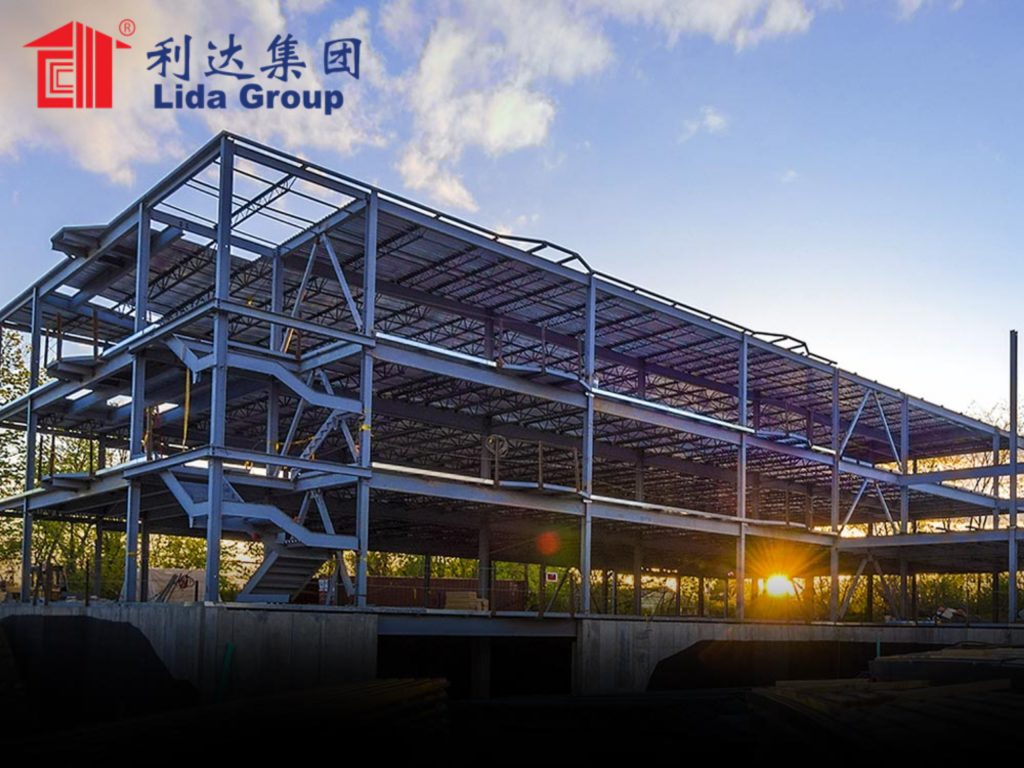
2. The Advantages of Metal Frame Construction: Why Steel Is Becoming Indispensable
Before delving into Lida’s specific innovations, it is essential to understand the inherent advantages of metal frame construction that have made it a cornerstone of modern building. Steel’s unique properties address many of the limitations of traditional materials, making it an ideal choice for a wide range of construction projects.
2.1 Strength and Durability: Building for the Long Term
Steel is one of the strongest construction materials available, with a tensile strength that far exceeds concrete and wood. This high strength-to-weight ratio means that metal frames can support heavy loads while using less material—reducing the overall weight of the building and minimizing the need for expensive foundation systems. For example, a steel beam can span 30 meters without additional support, compared to just 10 meters for a wooden beam of the same size.
Beyond strength, steel is highly durable. It is resistant to rot, mold, insects (such as termites), and corrosion (when properly treated with galvanization or coatings). This durability translates to longer building lifespans—steel frame buildings typically last 50–100 years, compared to 30–50 years for wood or concrete structures—and lower maintenance costs over time. In regions prone to natural disasters, such as earthquakes or hurricanes, steel’s flexibility and ductility make it particularly valuable: it can bend without breaking, absorbing seismic energy or wind forces that would destroy less resilient materials.
2.2 Sustainability: Reducing the Carbon Footprint of Construction
Sustainability is a key driver of the shift to metal frame construction, and steel excels in this area. Steel is 100% recyclable, with no loss of quality during the recycling process. In fact, over 90% of steel used in construction is recycled, making it one of the most recycled materials globally. This recycling capability significantly reduces the environmental impact of steel production: recycling steel uses 74% less energy and emits 75% less carbon dioxide than producing steel from raw iron ore.
Additionally, metal frame construction generates less waste than traditional methods. Steel components are manufactured to precise specifications in controlled factory environments, minimizing on-site cutting and material waste. Any leftover steel from a project can be easily recycled, further reducing landfill contributions. For developers and governments aiming to meet sustainability goals—such as the UN’s Sustainable Development Goals or net-zero carbon targets—steel frame construction offers a clear path to reducing the environmental footprint of buildings.
2.3 Speed and Efficiency: Accelerating Project Timelines
In an industry where delays can cost millions, speed is a critical advantage. Metal frame construction is inherently faster than traditional methods, thanks to prefabrication and modular assembly. Steel components are manufactured off-site in factories, where production is not affected by weather conditions or on-site labor shortages. Once delivered to the construction site, these components can be assembled quickly—often in a fraction of the time required for concrete or wood construction.
For example, a 10,000-square-meter steel frame warehouse can be assembled in 8–10 weeks, compared to 16–20 weeks for a concrete warehouse of the same size. This speed not only reduces labor costs but also allows developers to bring projects online faster, generating revenue sooner. In sectors like manufacturing or logistics, where time-to-market is crucial, metal frame construction has become the preferred choice.
2.4 Design Flexibility: Unlocking Architectural Innovation
Contrary to the perception that steel frame buildings are “boxy” or limited in design, modern metal framing systems offer exceptional flexibility. Steel’s strength allows for large open spaces, cantilevered structures, and complex architectural shapes that would be impossible with wood or concrete. This flexibility has made steel a favorite among architects, who use it to create iconic buildings—from skyscrapers like the Burj Khalifa to cultural centers like the Guggenheim Museum Bilbao.
Metal frames can also be easily modified or expanded, making them ideal for buildings that may need to adapt over time. For example, a steel frame office building can be reconfigured to add more workspace, or a steel frame retail center can be expanded to include new stores—all without major structural overhauls. This adaptability is increasingly valuable in a world where building needs are constantly evolving.
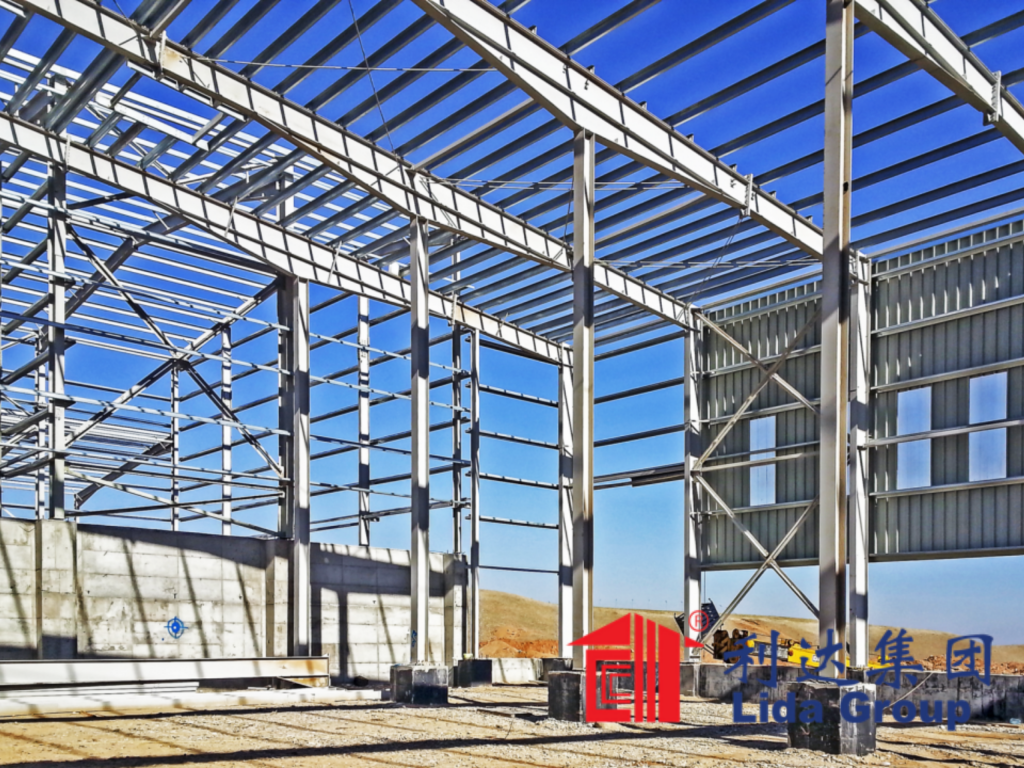
3. Lida Group’s Innovations in Metal Frame Building Technology
While metal frame construction offers inherent advantages, Lida Group has elevated these benefits through a series of groundbreaking innovations. These technologies address key challenges in steel construction—such as complex assembly, limited customization, and high production costs—while unlocking new possibilities for efficiency, sustainability, and design.
3.1 Modular Metal Framing Systems: Precision and Speed in Assembly
At the core of Lida’s innovation is its modular metal framing system, a proprietary design that breaks down steel structures into prefabricated, interlocking modules. Unlike traditional steel construction, where beams and columns are cut and welded on-site, Lida’s modules are manufactured in factories to exact specifications using automated equipment. Each module is a self-contained unit that includes steel framing, pre-installed utilities (electrical wiring, plumbing), and even exterior cladding or interior finishes.
The key to this system is its universal connection mechanism, which allows modules to be joined quickly and securely without the need for specialized tools or skilled labor. The mechanism uses high-strength bolts and interlocking steel plates that align automatically, ensuring a precise fit every time. For example, a steel frame wall module can be connected to a floor module in less than 10 minutes by a team of two semi-skilled workers—compared to 30–45 minutes for traditional welding.
This modular approach offers several advantages:
- Faster Assembly: A 5,000-square-meter steel frame building can be assembled in 4–6 weeks, compared to 12–14 weeks for traditional steel construction.
- Reduced Labor Costs: The simple connection mechanism eliminates the need for certified welders or steelworkers, reducing labor expenses by 30–40%.
- Improved Quality Control: Factory manufacturing ensures that modules meet strict quality standards, with minimal variation between units. This reduces the risk of on-site errors and rework.
Lida’s modular metal framing system is highly adaptable, with modules available in a range of sizes and configurations to suit different building types. For example, the company offers modules for load-bearing walls, floor joists, roof trusses, and even entire rooms—allowing for the construction of everything from small offices to large industrial facilities.
3.2 Automated Manufacturing: Precision and Scalability
To support its modular framing system, Lida has invested heavily in automated manufacturing technology at its production facilities. These facilities use advanced robotics, computer numerical control (CNC) machines, and 3D modeling software to produce steel modules with unparalleled precision.
The manufacturing process begins with a digital design created using Building Information Modeling (BIM) software. This design is then sent to CNC machines, which cut, drill, and shape steel components to within 0.1mm of their specified dimensions. Robotic arms then assemble these components into modules, welding joints (where necessary) and installing pre-fitted utilities with consistent accuracy.
This automation offers several key benefits:
- Consistency: Automated manufacturing eliminates human error, ensuring that every module is identical in quality and dimensions. This is critical for modular assembly, where precise alignment is essential.
- Speed: Automated lines can produce up to 50 modules per day, compared to 10–15 modules with manual manufacturing. This scalability allows Lida to handle large-scale projects with tight deadlines.
- Waste Reduction: CNC machines optimize material usage, cutting steel with minimal waste. Any leftover material is recycled, further reducing environmental impact.
Lida’s factories are also equipped with real-time quality control systems, which use sensors and cameras to inspect each module for defects. Modules that do not meet Lida’s strict standards are rejected and reworked before leaving the factory—ensuring that only high-quality components reach the construction site.
3.3 Smart Integration: Connecting Metal Frames to the Internet of Things (IoT)
In an era of smart buildings, Lida has integrated IoT technology into its metal frame systems, creating “connected” structures that are more efficient, safe, and user-friendly. This integration begins during the manufacturing process, where sensors are embedded in steel modules to monitor key metrics such as temperature, humidity, vibration, and structural stress.
Once the building is assembled, these sensors connect to a central IoT platform, which collects and analyzes data in real time. Building managers can access this platform via a mobile app or web dashboard, allowing them to:
- Monitor Structural Health: Sensors detect changes in structural stress, alerting managers to potential issues (such as overloading or damage from natural disasters) before they become critical.
- Optimize Energy Use: Temperature and humidity sensors work with HVAC systems to adjust heating and cooling in real time, reducing energy consumption by 20–30%.
- Enhance Safety: Vibration sensors can detect earthquakes or explosions, triggering automatic safety protocols such as closing fire doors or activating emergency alarms.
Lida’s smart metal frame systems also support remote maintenance. For example, if a sensor detects a problem with a steel beam, the IoT platform can send a notification to Lida’s maintenance team, who can remotely diagnose the issue and dispatch technicians with the correct tools and parts. This reduces downtime and maintenance costs, while improving the overall safety and longevity of the building.
3.4 Sustainable Steel Solutions: Reducing Environmental Impact
As a leader in sustainable construction, Lida has developed several innovations to minimize the environmental impact of its metal frame buildings. One of the most significant is its use of high-recycled-content steel—steel that contains 95% recycled material, compared to the industry average of 70%. This recycled steel is sourced from scrap metal, reducing the need for raw iron ore extraction and lowering carbon emissions by 75% compared to virgin steel.
Lida has also pioneered the use of low-VOC (volatile organic compound) coatings on its steel components. Traditional steel coatings contain harmful chemicals that can off-gas into the environment, contributing to air pollution and health risks. Lida’s low-VOC coatings are water-based and free of toxic substances, making them safer for workers and the environment while still providing excellent corrosion resistance.
In addition, Lida’s modular design promotes circularity in construction. At the end of a building’s lifespan, its steel modules can be disassembled, recycled, or repurposed for new projects. This eliminates the need for demolition and reduces construction waste—aligning with Lida’s commitment to a circular economy.
3.5 Fire-Resistant and Corrosion-Resistant Innovations: Enhancing Safety and Durability
Two common concerns with steel frame construction are fire risk and corrosion. Lida has addressed these issues with specialized innovations that enhance the safety and durability of its metal frame buildings.
For fire resistance, Lida uses intumescent coatings on its steel components. These coatings expand when exposed to high temperatures, forming a thick, insulating layer that protects the steel from heat. This layer prevents the steel from losing strength during a fire, giving occupants more time to evacuate and reducing damage to the building. Lida’s intumescent coatings have been tested to withstand temperatures of up to 1,200°C for 2–4 hours—exceeding industry standards for fire resistance.
To combat corrosion, Lida offers galvanized steel modules with a zinc coating that acts as a barrier against moisture and rust. For projects in harsh environments—such as coastal areas with saltwater spray or industrial zones with chemical fumes—Lida provides an additional polyester powder coating that further enhances corrosion resistance. These coatings extend the lifespan of steel components by 20–30 years, reducing maintenance costs and ensuring long-term durability.
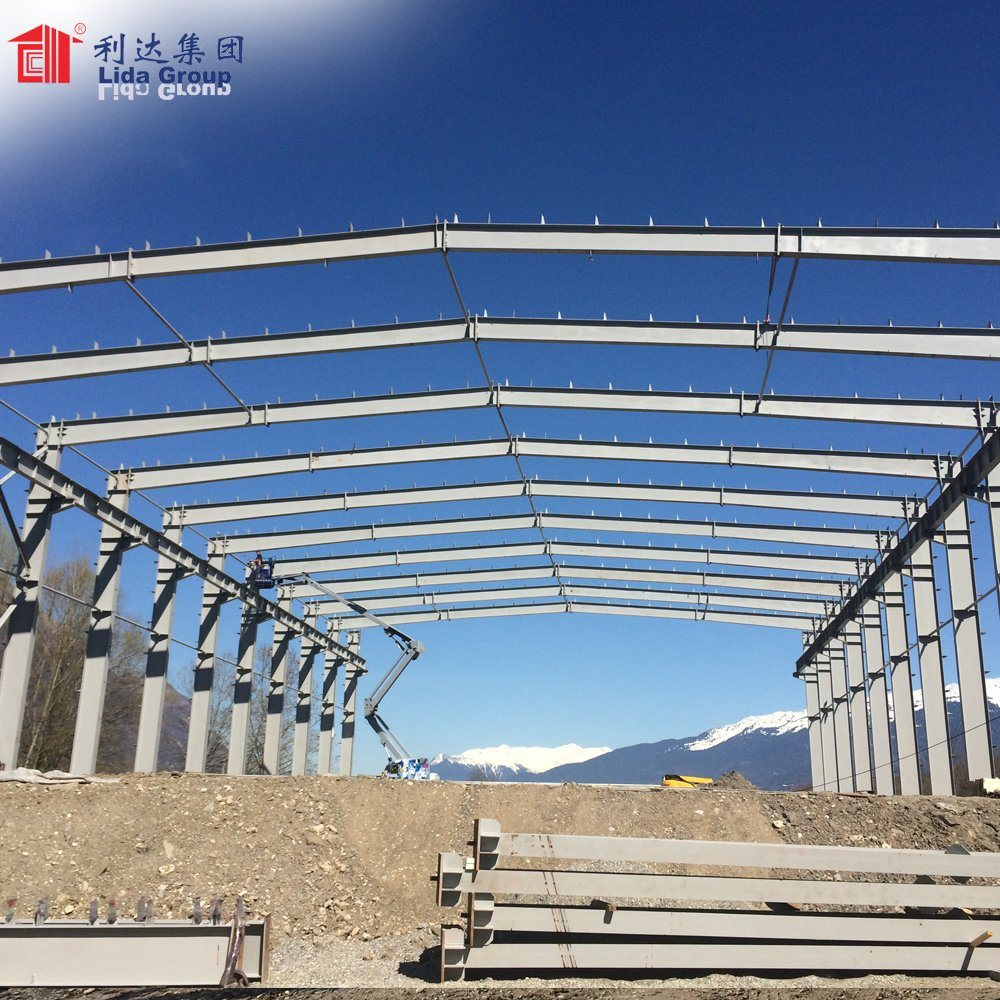
4. Applications of Lida’s Metal Frame Technology: From Warehouses to Residences
Lida Group’s metal frame innovations are not limited to a single building type—they have been successfully applied across a diverse range of projects, from large-scale industrial facilities to small residential homes. This versatility is a testament to the adaptability of Lida’s technology and its ability to meet the unique needs of different sectors.
4.1 Industrial and Logistics Facilities: Speed and Strength for Heavy-Duty Use
Industrial warehouses, distribution centers, and manufacturing plants require buildings that are strong enough to support heavy equipment, large loads, and tall ceilings—while being fast to construct to meet tight operational deadlines. Lida’s metal frame technology is ideally suited to these needs.
For example, Lida recently completed a 20,000-square-meter distribution center for a global e-commerce company in China. The building features a steel frame with 12-meter-high ceilings (to accommodate tall storage racks) and a 20-meter clear span (to allow for unobstructed movement of forklifts and delivery trucks). Using Lida’s modular metal framing system, the building was manufactured in 4 weeks and assembled on-site in 6 weeks—total construction time of 10 weeks, compared to 24 weeks for a traditional concrete warehouse.
The steel frame also offers long-term benefits: it can support floor loads of up to 5,000 kg per square meter (enough for heavy pallets of goods) and is resistant to corrosion from the warehouse’s humidity-controlled environment. The e-commerce company reported that the fast construction timeline allowed it to launch its distribution operations 3 months earlier than planned, generating an additional $2 million in revenue.
4.2 Commercial Buildings: Design Flexibility for Modern Spaces
Commercial buildings—such as offices, retail centers, and hotels—require a balance of design appeal, functionality, and efficiency. Lida’s metal frame technology allows architects to create modern, open spaces while ensuring fast construction and low maintenance costs.
One notable project is a 15,000-square-meter office complex in Dubai, designed by a leading international architecture firm. The complex features a curved steel frame facade, large glass windows (supported by steel beams), and open-plan office spaces with 4-meter-high ceilings. Lida’s modular metal framing system was critical to realizing this design: the curved steel modules were manufactured in Lida’s factory using CNC machines, ensuring precise alignment, while the open-plan spaces were made possible by the steel frame’s long span capabilities.
The building was completed in 16 weeks—8 weeks faster than a concrete office complex of the same size—and has since received LEED Gold certification for sustainability, thanks to its high-recycled-content steel, energy-efficient IoT systems, and low-VOC coatings. The office’s tenants have praised the building’s natural light, open layout, and quiet environment (made possible by steel’s sound-dampening properties), reporting a 15% increase in employee productivity.
4.3 Residential Buildings: Affordability and Durability for Homes
While steel frame construction is often associated with large commercial or industrial projects, Lida has adapted its technology for residential use, creating affordable, durable, and energy-efficient homes.
In Kenya, Lida partnered with the local government to build a 500-home residential development for low-income families. Each home is a 60-square-meter, 2-bedroom house with a steel frame, insulated walls, and a solar-powered roof. Using Lida’s modular system, the homes were manufactured in batches of 50, with each batch taking 2 weeks to produce and 1 week to assemble on-site. The total cost per home was $18,000—30% less than a traditional brick-and-mortar home in the same area.
The steel frame homes offer several advantages for Kenyan families: they are resistant to termites (a major problem with wood homes), can withstand heavy rains and winds (common in Kenya’s coastal regions), and are energy-efficient (the insulated steel walls reduce heating and cooling costs by 40%). A follow-up survey conducted 2 years after the development’s completion found that 98% of homeowners were satisfied with their homes, citing durability and low maintenance as key benefits.
4.4 Emergency Shelters: Rapid Deployment for Crisis Response
In times of natural disaster, speed is critical to saving lives. Lida’s metal frame technology has been adapted to create emergency shelters that can be deployed quickly and withstand harsh post-disaster conditions.
After the 2023 earthquake in Turkey, Lida donated 1,000 emergency shelters to the affected regions. Each shelter is a 20-square-meter steel frame structure with a
rock wool-insulated sandwich panel exterior (for fire resistance and thermal protection) and a galvanized steel frame (to withstand post-earthquake aftershocks and harsh winter weather). The shelters were designed to be assembled quickly: each shelter’s steel frame consists of just 8 modular components that can be connected using basic tools, allowing a team of 3 volunteers (with 1 hour of training) to assemble a shelter in 2 hours.
Lida’s team worked with local relief organizations to deploy the shelters within 72 hours of the earthquake. The shelters provided safe housing for over 5,000 displaced people, protecting them from freezing temperatures (as low as -5°C) and heavy rain. Unlike temporary tents, which leaked and collapsed in strong winds, the steel frame shelters remained stable and dry. “These shelters are a lifeline,” said a local relief worker, Ahmet Kaya. “They’re strong enough to withstand aftershocks, and they keep families warm at night. We couldn’t have helped as many people as quickly without them.”
As Turkey’s recovery progressed, many of the shelters were repurposed as temporary schools and medical clinics—thanks to the flexibility of Lida’s steel frame design. The modular components were easily reconfigured to add windows, desks, or medical equipment, demonstrating how Lida’s technology can adapt to evolving crisis needs.
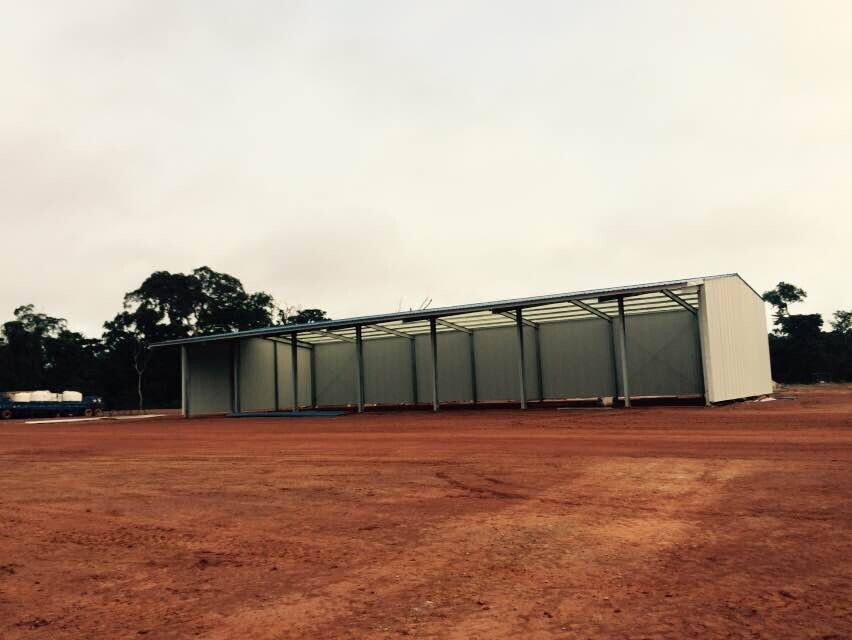
5. Market Feedback and Industry Recognition: Validating Lida’s Leadership
Lida Group’s innovations in metal frame building technology have not only delivered results for clients but also earned widespread recognition from the construction industry and global organizations. This feedback and recognition validate Lida’s position as a leader in steel structure construction and highlight the impact of its technology on the broader industry.
5.1 Client Testimonials: Real-World Results
Clients across sectors consistently praise Lida’s metal frame technology for its speed, durability, sustainability, and flexibility.
- Industrial Sector: The global e-commerce company that commissioned Lida’s 20,000-square-meter distribution center in China noted, “Lida’s steel frame system cut our construction time in half and saved us $1.2 million in labor costs. The building is strong enough to support our heaviest equipment, and the IoT sensors help us monitor its condition remotely—something we couldn’t do with a traditional concrete warehouse.”
- Commercial Sector: The developer of the Dubai office complex said, “Lida’s technology allowed us to realize our architect’s bold design while staying on budget and on schedule. The building’s LEED Gold certification has been a major selling point for tenants, and we’ve seen higher occupancy rates than comparable concrete buildings.”
- Residential Sector: A Kenyan homeowner in Lida’s 500-home development shared, “My steel frame home has been perfect. It doesn’t have termite problems like my old wood house, and it stays cool in the summer. I haven’t had to spend a penny on maintenance in two years—something I never thought possible with an affordable home.”
- Humanitarian Sector: The Turkish Red Crescent, which partnered with Lida during the earthquake response, stated, “Lida’s emergency shelters are the most durable and easy-to-assemble we’ve ever used. They’ve set a new standard for disaster relief housing, and we plan to work with Lida on future crises.”
5.2 Industry Awards and Certifications
Lida’s leadership in metal frame construction has been recognized with prestigious industry awards:
- 2022 Global Steel Construction Innovation Award: Lida won this award for its modular metal framing system, with judges praising the technology for “revolutionizing steel construction by simplifying assembly and reducing reliance on skilled labor.”
- 2023 Sustainable Building Award: The company received this award for its high-recycled-content steel and low-VOC coatings, which judges noted “set a new benchmark for sustainability in metal frame construction.”
- LEED Platinum Partner Status: Lida is one of only a handful of construction companies to earn LEED Platinum Partner status from the U.S. Green Building Council, recognizing its commitment to sustainable building practices across all projects.
In addition to awards, Lida’s metal frame technology has received certifications from global standards organizations, including the International Code Council (ICC) and the European Committee for Standardization (CEN). These certifications ensure that Lida’s buildings meet or exceed safety, durability, and sustainability standards in over 100 countries, making it easier for the company to expand into new markets.
5.3 Industry Impact: Shaping the Future of Construction
Lida’s innovations have had a broader impact on the construction industry, driving change in how steel frame buildings are designed, manufactured, and assembled.
- Adoption of Modular Steel Construction: Many competitors have begun to adopt modular steel framing systems, inspired by Lida’s success. This shift has accelerated the overall adoption of metal frame construction, making it a more mainstream alternative to traditional materials.
- Focus on Sustainability: Lida’s use of high-recycled-content steel and low-VOC coatings has pressured other steel construction companies to improve their sustainability practices. For example, several major steel manufacturers have increased the recycled content of their products to match Lida’s 95% standard.
- Advancement of Smart Building Technology: Lida’s integration of IoT sensors into metal frames has popularized the concept of “smart steel buildings.” Today, many construction firms offer IoT-enabled steel structures, citing Lida as a pioneer in the space.

6. Future Plans: Continuing to Innovate in Metal Frame Construction
Lida Group is not resting on its laurels. The company has ambitious plans to further advance its metal frame building technology, expand its global reach, and address emerging challenges in the construction industry.
6.1 Next-Generation Modular Systems: Even Faster, More Flexible Assembly
Lida’s R&D team is developing a next-generation modular metal framing system that will further reduce assembly time and increase flexibility. The new system will feature:
- Self-Locking Connections: A proprietary self-locking mechanism that eliminates the need for bolts or tools, allowing modules to be connected in under 2 minutes (down from 10 minutes with the current system).
- Lightweight Steel Alloys: New lightweight steel alloys that maintain the same strength as traditional steel but reduce module weight by 30%. This will make modules easier to transport and assemble, particularly in remote areas with limited infrastructure.
- 3D-Printed Components: The integration of 3D-printed steel components for custom parts, allowing for greater design flexibility. For example, 3D-printed brackets can be used to create unique architectural shapes that would be difficult to manufacture with traditional methods.
The new system is expected to launch in 2025 and will be tested on a 5,000-square-meter commercial building in Singapore.
6.2 Carbon-Neutral Steel Production: Leading the Charge for Net-Zero Construction
Lida is committed to achieving carbon-neutral steel production by 2030. The company is investing in two key technologies to reach this goal:
- Green Steel Manufacturing: Partnerships with green steel producers that use hydrogen instead of coal to produce steel. Hydrogen-based steel production emits zero carbon dioxide, compared to traditional coal-based production, which emits 1.8 tons of CO2 per ton of steel.
- On-Site Renewable Energy: Installing solar panels and wind turbines at Lida’s manufacturing facilities to power production with 100% renewable energy. The first solar-powered facility will open in India in 2024, with plans to convert all facilities by 2028.
These initiatives will reduce Lida’s carbon footprint by 80% by 2027 and 100% by 2030, aligning with global net-zero goals.
6.3 Expansion into Emerging Markets: Making Metal Frame Construction Accessible Globally
Lida plans to expand its operations into 15 new emerging markets by 2026, including Vietnam, Nigeria, Brazil, and Mexico. The company will establish local manufacturing facilities in these markets to reduce transportation costs and tailor its technology to local needs. For example:
- In Vietnam, Lida will develop steel frame homes designed to withstand monsoon rains and high humidity, using local bamboo as a complementary material for interior finishes.
- In Nigeria, the company will focus on affordable steel frame schools and healthcare clinics, addressing the country’s shortage of essential infrastructure.
Lida will also partner with local governments and NGOs in these markets to offer training programs for construction workers, teaching them how to assemble and maintain metal frame buildings. This will create local jobs and ensure that Lida’s technology is adopted sustainably.
6.4 Integration with Artificial Intelligence (AI): Optimizing Design and Maintenance
Lida is exploring the use of artificial intelligence (AI) to enhance its metal frame technology. The company’s R&D team is developing an AI-powered design platform that will:
- Optimize Module Design: AI algorithms will analyze project requirements (e.g., building size, climate, load capacity) to automatically design the most efficient modular steel frame system, reducing material waste by up to 15%.
- Predictive Maintenance: AI will analyze data from IoT sensors in steel frames to predict maintenance needs (e.g., corrosion, stress points) before issues arise. This will further reduce maintenance costs and extend the lifespan of buildings.
The AI platform is expected to be integrated into Lida’s operations by 2025, starting with large-scale industrial projects.
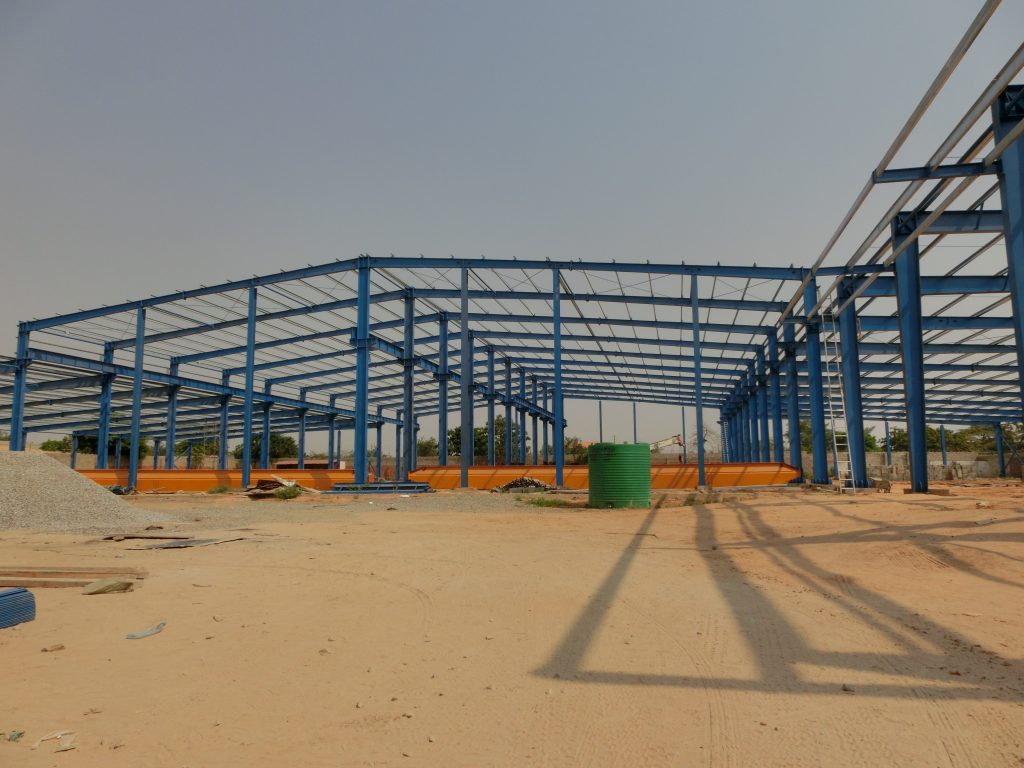
7. Conclusion
Lida Group’s innovations in metal frame building technology have positioned the company as a clear leader in steel structure construction. By addressing key challenges in traditional steel construction—complex assembly, high costs, limited sustainability, and rigid design—Lida has redefined what is possible with metal frame buildings, making them faster to construct, more durable, more sustainable, and more flexible than ever before.
From its modular metal framing system that cuts assembly time in half to its IoT-integrated smart buildings and carbon-neutral steel production plans, Lida’s technology has delivered tangible value across diverse sectors: industrial warehouses that launch operations months earlier, commercial buildings that earn top sustainability certifications, affordable residential homes that withstand harsh climates, and emergency shelters that save lives in crises. These real-world results, supported by glowing client testimonials and industry awards, validate Lida’s leadership and highlight the transformative impact of its innovations.
Beyond its immediate success, Lida Group has shaped the broader construction industry. Its focus on modularity, sustainability, and smart technology has inspired competitors to adopt similar practices, accelerating the shift toward metal frame construction as a viable alternative to concrete and wood. In doing so, Lida has contributed to a more sustainable, efficient, and adaptable construction sector—one that is better equipped to meet the global challenges of urbanization, climate change, and housing shortages.
Looking ahead, Lida’s future plans—next-generation modular systems, carbon-neutral production, expansion into emerging markets, and AI integration—promise to further solidify its leadership. By continuing to innovate, Lida is not just building better steel frame buildings; it is building a future where construction is faster, more sustainable, and more accessible to communities around the world.
In a construction industry undergoing rapid transformation, Lida Group stands out as a pioneer. Its metal frame building technology is more than a collection of innovations—it is a blueprint for how construction can evolve to meet the needs of the 21st century. As the world continues to demand faster, greener, and more flexible building solutions, Lida Group is well-positioned to lead the way, proving that steel frame construction is not just a trend but the future of building.

Related news
-
Lida Group Sets a New Standard for Speed with Its Easy-Assemble Prefab Mobile Houses Using Sandwich Panels
2025-09-25 09:59:15
-
Lida Group Revolutionizes Industrial Storage with Advanced Steel Structure Construction for High-Capacity Steel Frame Warehouses
2025-09-25 10:37:02
-
From Remote Sites to Backyard Offices: The Versatility of Lida Group's Easy-Assemble Prefab Mobile Houses
2025-09-25 10:14:27
contact us
- Tel: +86-532-88966982
- Whatsapp: +86-13793209022
- E-mail: sales@lidajituan.com


